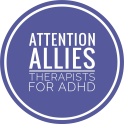A connection with an ADHD therapist transformed how transactional analysis-trained therapist Hayley Watkins understood neurodivergence and self-acceptance. Through therapy and a chaotic, joyful, city break, Hayley discovered the beauty in difference — and the power of celebrating it.
(4 minute read)
I had an interesting experience about a year ago.
Despite being a qualified counsellor, I like to get therapy as a client from time to time to enjoy some time to be my full self. My therapist at the time, Bridget,* was exactly what I needed. She had ADHD, and she played a big role in me learning to accept myself. At the time, I was still a bit unsure how much I accepted the possibility that I was autistic.
I think the term “self-acceptance” has an almost death-like quality to it. Acceptance is the fifth stage of the five stages of grief (Cruse, no date), so the word has a connection to death or loss, at least for me. That isn’t the spirit in which Bridget accepted herself: she did it with celebration and love – and her enthusiasm was infectious!
In fact, I should mention here that radical acceptance (Cuncic, 2024) is already a known term in the world of psychology and therapy, and that too has a certain grimness to it. That’s not what I’m going to talk about here, although I admit it’s in my nature to be upbeat.
Bridget loved the treasures that came with her ADHD. That doesn’t mean she ignored that it could be hard sometimes, and that an ADHD brain can make some things difficult that are easy for a neurotypical brain, but she loved the good parts, and she taught me to feel the same way about my neurodivergent brain.
While I score quite low for ADHD, I tend to have more ideas than I could ever make into reality, which is a characteristic of ADHD. One day, while telling Bridget about some ideas I’d had, she said she saw my ideas as “gems coming out of my head”. It was a lovely moment for her to point out that my neurodivergence gave me something to enjoy that I might have missed out on, if I’d been a “normie”.
Bridget had to retire in a hurry a few months later, but I’ll never forget the riches she saw in being neurodivergent.
Example: My city break
Months later, I arranged a city break with a friend called Jess.* Jess has an ADHD diagnosis, and it shows up in a number of ways, including a generous spray of her own gems. Jess had so many ideas for what we could do on our break that there was no way we could do all of them. She kept switching ideas for how to use the short time we had, to the point that by the time I showed up, I had no idea what we were doing any more.
I like to have a plan and know what I’m doing; it helps me feel secure. However, to stick to a plan we made ages ago would be pure drudgery for Jess. We were going to have to work around each other to get the best out of this trip.
Radical acceptance helped us both out. I accepted that I would feel untethered by the lack of a plan, and that instead, this trip would be a magical mystery tour – and it was! J’s huge cache of ideas meant we were never at a loss for what to do. Her spontaneity means that she’s great at thinking on the spot, remaking plans in double-quick time, and is one of the most resourceful human beings I’ve had the pleasure to meet. In short, she’s a great travel companion, and the best person for me to get lost in a strange city with!
It also helped that I accepted that I want structure but might not get very much of it during the trip. Mealtimes were enough structure for me, so I suggested we break for lunch after we finished enjoying the daffodils, sheer amount of space and seagulls in the park. I like the natural world, so I told Jess a little about the birds we had seen, which, as an American, she was unfamiliar with. Stopping for lunch gave us the chance to talk for an hour about sugar in the average diet in the States, inspired by one of the most chocolatey brownies either of us had ever had; she got to talk about something that mattered to her, and I learned something new about our cousins across the pond. Also, I got to sit in a corner in a wood-panelled cafe.
What was there not to like, for both of us, even if it was for different reasons?
There were a few other adjustments I needed that Jess could accommodate. She was staying longer than me, so I asked for dinner to be Thai (which I’m comfortable and familiar with, as is my autistic wont) instead of Indian (which I’m not, and isn’t), so she decided to have Indian the following night.
Jess and I are so different, and those differences could have made the visit difficult, but accepting one another and enjoying the surprises that we each present the other with made the trip a pleasure.
Note
* Not their real names.
References
Cruse. No date. Understanding the five stages of grief. Accessed 10 April 2025: www.cruse.org.uk/understanding-grief/effects-of-grief/five-stages-of-grief/
Cuncic, A. 2024. How to embrace radical acceptance. Accessed 10 April 2025: www.verywellmind.com/what-is-radical-acceptance-5120614
Click the links if you'd like to visit Hayley's therapy website or her directory entry on Attention Allies.
Published 4 May 2025
All rights reserved © Copyright Hayley Watkins 2025. Unauthorised use and/or duplication of this material without express and written permission from the author of this post is strictly prohibited. Author contact via website Contact page.
Website version and image © Copyright Attention Allies 2025.
